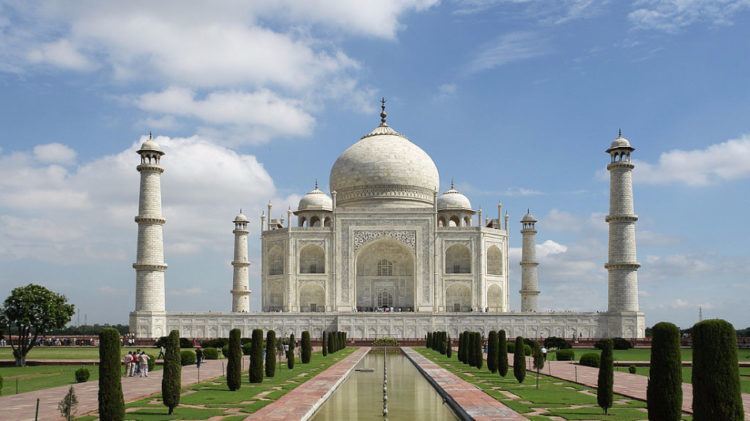
Zoomcar CEO Greg Moran. Photo credit: Zoomcar.
In 2011, Greg Moran spent three months traveling across India, talking to thousands of people for what he says was primary research for his fledgling startup idea: to launch a car rental service in Asia’s fastest growing economy.
The New York resident decided to marry his passion for environment and numbers, and launched Zoomcar in India – where less than 10 percent of city residents own cars, and public transport can often be a nightmare.
“In 2012, I booked a trip to the US for Thanksgiving and I didn’t know if I was coming back. Then we signed a deal with Ramesh Tours and Travels [owned by famous rich barber Ramesh],” he told Tech in Asia.
Ramesh, for those who do not know, is popularly known as the “Barber with the Rolls Royce.
His company, Ramesh Tours and Travels Private Limited, owns around 127 cars.
“For the first 15 months we were just in Bangalore and then we launched in Pune, and then we went to Delhi,” said Greg.
See: Ford leads $24m funding in India’s Zoomcar
“Going global is the next big thing. Not this year, but I think 18 months out that makes sense,” he said.
Nothing’s locked in, but countries under consideration are Indonesia, the Philippines, or Nigeria and other African markets.
“There are a lot of big markets there where people are hungry for the same things Indians are hungry for.”
American in India

Photo credit: Wikimedia.
Zoomcar is India’s biggest app-based car rental, along the lines of Hertz or Avis, but working entirely online. Greg likes to say they are a technology company first. The company’s fleet of 2000 cars is more than double the size of its nearest rival, Myles, which commands about 800 cars.
Getting here wasn’t a piece of cake for a foreigner working a system that is broadly considered to be layered with red tape. Global bigwigs like Amazon had to change policies and leave charge of India to locals to work the system here. Uber even introduced the post of country president for India as it took on rival Ola.
For Greg, initial hurdles ranged from convincing car makers to buy into the idea, to getting investors interested.
“A lot of times investors can be like, ‘Your family is in the US, what happens if you get married?’ And all personal questions come in,” he said.
“That’s unavoidable and it’s difficult, because what can you say? If you stay long enough and build something, they realize you are serious.”
Three years on, Zoomcar counts Ford, Sequoia Capital, Nokia Growth Partners, and Empire Angels as investors. It rents out cars including luxury sedans like BMWs, hatchbacks like Ford Figos, SUVs like Mahindra Scorpios, and even electric cars like the Mahindra Reva E2O.
Being American [Greg laughs when I ask what it is to be a white guy building a startup here] also helped in that he could find connections with US car makers like Ford and bring them on board.
On his to-avoid list is what is notoriously known in Indian business circles as the “Delhi-network.” It’s a system based on word-of-mouth introduction, where one contact loops in another and so forth, often to “help” with loopholes in laws or regulations, or to help skirt them. Many entrepreneurs swear by this support system as launching businesses in the country can be a test of patience and sanity.
If you stay long enough and build something, they realize you are serious
“You have to be careful of the system where people introduce you to a guy who knows a guy,” Greg said. “I don’t really take too much stock in that.”
Instead, Greg started at the bottom [“With Maruti, Tata, and Mahindra I had to build contacts from the ground up”], roped in dealers, and worked his American connects.
“When you are building a business with car companies, the OEMs [car makers] can be doubting, so coming in with a fresh face helped. With the car companies it helped that I was non-Indian, because it says I am coming to a very difficult market to operate in, so I must really believe very strongly in what I am doing. That earns a little bit more respect, maybe, and adds gravitas,” said Greg.
“From a local business standpoint, the dealers are some of the best connections because they know everything and everyone,” Greg said.
Growth and changes

Photo credit: Oscar Rethwill.
Zoomcar now services 12 cities and plans to be in 25 cities in the next four to five months. Fleet size is expected to go up from 2,000 cars to 10,000 cars by the end of 2017, and 25,000 cars by the time 2018 ends.
The company plans to break even by the end of the current fiscal year.
The growth, however, has meant a change in its business model – Zoomcar can’t buy cars fast enough to service its customers. That led to the launch of its marketplace model earlier this month.
Zap [the marketplace] allows people to buy cars on behalf of Zoomcar, list the vehicle on its platform, and share in the profit on a daily, weekly, and monthly basis. Zoomcar said 75 percent of the revenue goes to the car owner and 25 percent to Zoomcar. The company expects the marketplace model to account for over 75 percent of its overall vehicle inventory by early 2017.
The need to make this move is directly correlated to its growth plans, Greg said. “When you have taken money from – say, banks – it inherently becomes tougher to scale fast. The banks will say here’s a 100-car loan, or a 150-car loan […] it comes in chunks and spurts. It’s a wait and [is] jerky. That’s challenging,” the CEO explained.
In 12 months, he wants 7,000 to 8,000 cars registered with Zap. Going forward, Zoomcar won’t be buying cars anymore, he said.

The marketplace model.
The company is also making investments in car and passenger safety – all the more critical now that it won’t own the cars in its fleet.
Earlier this month, Zoomcar roped in Israeli advanced driver assistance systems maker Mobileye to install a warning system in the Zoomcar fleet. The Mobileye devices, which chiefly provide three kinds of warnings – for lane departure, headway monitoring, and forward collision – have been set up in about 40 Ford and Mahindra & Mahindra vehicles operated by Zoomcar in New Delhi, and are to be extended to its entire fleet in the coming months, Greg said.
Zoomcar also partnered with ICICI Lombard for insurance cover.
The marketplace model could however make it easier for others to copy. If Zoomcar can get users to list their cars for others to drive around, what’s stopping, say, Uber or Ola?
Greg brushed that concern aside.
“An Uber has always been a taxi service. What’s stopping them is competence,” Greg said, adding that while Uber has great technology, it is geared toward servicing the on-demand taxi business. The nuances of renting out cars for passengers to drive themselves require solving a different set of problems and servicing different people.
“They don’t understand this subject. It will take them at least a year to learn this correctly,” Greg said.
This post How an American came to India, launched a successful startup, and now plans to go international appeared first on Tech in Asia.
from Tech in Asia https://www.techinasia.com/zoomcar-plans-international-expansion
via IFTTT
No comments:
Post a Comment